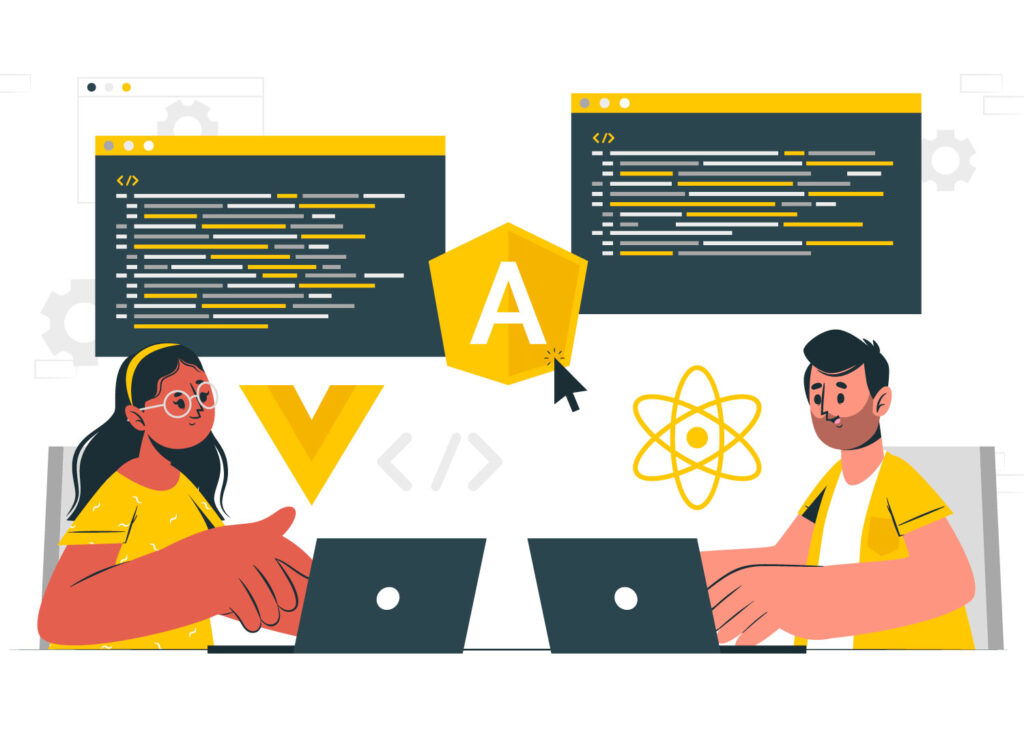Remote Work Tools Every Business Needs In 2023

11 Must-Have Remote Work Tools Every Business Needs In 2023 (Or Your Team Will Be a Hot Mess)
It’s official: remote work is here to stay. No longer just a trend, the COVID-19 pandemic has made it clear that working from home is a viable option for many employees. But with this shift comes the need for the right tools and technologies to support remote work. Without them, your team will be a hot mess.
In this article, we’ll be looking at 11 must-have tools for remote work in 2023. These tools will help your team stay productive, connected, and (somewhat) sane while working from home.
Google Drive
With Google Drive, your team can access and collaborate on files from anywhere (even if they’re hiding under their desk with a bag of chips).
Google Drive is a cloud-based file storage and collaboration platform that enables teams to store, share, and collaborate on files in real time. It offers a range of features including document editing, spreadsheet creation, and presentation building. Google Drive is free to use, but there are paid plans that offer additional storage and advanced features.
The paid plans start at $6 per user per month and offer features such as unlimited storage, advanced security options, and the ability to access Google’s suite of office tools. These advanced features can be especially useful for businesses with large teams or high-security requirements.
However, small teams or individuals on a budget can still make use of Google Drive’s free version, which offers 15GB of storage and basic collaboration features. Just don’t expect to store all your memes there – 15GB fills up pretty fast.
Trello
Trello helps you organize and track your work, so you can focus on getting things done instead of trying to remember where you put that to-do list (was it under the cat or in the fridge?).
Trello is a project management tool that helps teams organize and track their work. It allows users to create boards for different projects, add lists and cards for tasks, and collaborate with team members in real time. Trello offers a free plan, as well as paid plans that include additional features such as custom backgrounds, and integrations, and we’re just getting started.
The paid plans start at $9.99 per user per month and offer features such as unlimited boards, integrations with over 1,000 apps, and advanced security options. These features can be particularly useful for businesses with large or complex projects.
However, small teams or individuals on a budget can still make use of Trello’s free version, which offers unlimited boards and basic collaboration features. It may not have all the bells and whistles, but it’ll get the job done (plus, it’s better than using Post-it notes).
Slack
Slack keeps your team connected and productive, no matter where you are (even if you’re on the couch in your pajamas at 3 pm on a Wednesday).
Slack is a messaging and collaboration platform that helps teams communicate and collaborate in real time. It offers features such as group and direct messaging, file sharing, and integrations with other tools. Slack has a free plan, as well as paid plans that offer additional features such as unlimited integrations, unlimited storage, and more.
The paid plans start at $6.67 per user per month and offer features such as unlimited integrations, unlimited storage, and advanced security options. These advanced features can be particularly useful for businesses with large teams or high-security requirements.
However, small teams or individuals on a budget can still make use of Slack’s free version, which offers basic messaging and collaboration features. It may not have all the bells and whistles, but it’ll help you stay connected with your team (and isn’t that the whole point?).
Asana
Asana keeps your team organized and on track, so you can hit your deadlines and achieve your goals (even if your cat keeps trying to sit on your keyboard).
Asana is a project management tool that enables teams to track and manage their work. It offers features such as task management, team communication, and integrations with other tools. Asana has a free plan, as well as paid plans that offer additional features such as advanced reporting and integrations, and custom fields to speak of a few.
The paid plans start at $9.99 per user per month and offer features such as advanced reporting, integrations with over 100 apps, and the ability to create custom fields. These advanced features can be particularly useful for businesses with large or complex projects.
Nevertheless, small teams or individuals on a budget can still make use of Asana’s free version, which offers basic project management and collaboration features.
Harvest
With Harvest, you can track your time and expenses, create invoices, and get paid – all in one place (finally, something that makes sense).
Harvest is a time-tracking and invoicing tool that enables businesses to track their time and expenses, create invoices, and get paid. It offers features such as time tracking, expense tracking, and integrations with other tools. Harvest has a free plan for a single user, as well as paid plans that offer additional features such as team time tracking, integrations, etc.
The paid plans start at $12 per user per month and offer features such as team time tracking, integrations with over 50 apps, and the ability to create custom invoices. These advanced features can be particularly useful for businesses with large teams or complex billing needs.
Even if you’re a new startup with not that much cash flow in the system, you can still make a great deal of use of f its free version as well.
Zoom
With Zoom, you can stay connected with your team, no matter where you are (or how bad your WiFi connection is).
Zoom is a video conferencing tool that enables teams to connect and collaborate remotely. It offers features such as video and audio conferencing, screen sharing, and integrations with other tools. Zoom has a free plan, as well as paid plans that offer additional features such as large meetings.
The paid plans start at $14.99 per month and offer features such as large meetings with up to 1,000 participants, integrations with over 1,000 apps, and advanced security options. These advanced features can be particularly useful for businesses with large teams or high-security requirements.
On the other hand, Zoom’s free plan offers basic video conferencing and collaboration features for meetings with up to 100 participants. Unless you’re a big enterprise, the free version will be one hell of a bargain itself.
Invoicely
With Invoicely, you can create professional invoices, track payments, and get paid faster (no more chasing clients for payment).
Invoicely is an invoicing and payment tracking tool that enables businesses to create professional invoices, track payments, and get paid faster. It offers features such as invoicing, payment tracking, and integrations with other tools. Invoicely has a free plan, as well as paid plans that offer additional features such as recurring invoices and integrations.
The paid plans start at $9.95 per month and offer features such as recurring invoices, integrations with over 50 apps, and the ability to create custom invoices. These advanced features can be particularly useful for businesses with complex billing needs.
Similarly, Invoicely’s free plan offers basic invoicing and payment tracking features. While it may not be the premium thing, it’ll help you get paid faster.
Loom
With Loom, you can record and share videos of your screen, face, or both (perfect for those awkward Zoom meetings where you’re not sure if you’re supposed to turn your camera on or not).
Loom is a video recording and sharing tool that enables users to record and share videos of their screen, face, or both. It offers features such as video recording, sharing, and integrations with other tools. Loom has a free plan, as well as paid plans that offer additional features such as unlimited storage.
The paid plans start at $8 per user per month and offer features such as unlimited storage, integrations with over 50 apps, and advanced security options. These advanced features can be particularly useful for businesses with large teams or high-security requirements.
Loom’s free plan offers basic video recording and sharing features that can essentially help you communicate more effectively (and who couldn’t use a little help with that?).
Dropbox
With Dropbox, you can store, share, and access your files from anywhere (even if you left your laptop charger at the coffee shop).
Dropbox is a cloud-based file storage and sharing platform that enables users to store, share, and access their files from anywhere. It offers features such as file storage, sharing, and integrations with other tools. Dropbox has a free plan, as well as paid plans that offer additional features such as unlimited storage, and advanced security options.
The paid plans start at $11.99 per user per month and offer features such as unlimited storage, integrations with over 1,000 apps, and advanced security options. These advanced features can be particularly useful for businesses with large teams or high-security requirements.
If you’re a small team or individuals on a budget, you can still make use of Dropbox’s free version, which offers 2GB of storage and basic file-sharing features.
Canva
With Canva, you can create professional-quality designs without hiring a graphic designer (finally, something you can afford).
Canva is a design and publishing tool that enables users to create professional-quality designs without hiring a graphic designer. It offers features such as design templates, graphics, and integrations with other tools. Canva has a free plan, as well as paid plans that offer additional features such as unlimited templates, advanced design features, and more.
The paid plans start at $12.95 per user per month and offer features such as unlimited templates, integrations with over 50 apps, and advanced design features. These advanced features can be particularly useful for businesses with complex design needs.
Canva’s free plan isn’t anything to take lightly either. The app offers basic design templates and graphics which can pretty much get the job done and create professional-quality designs without breaking the bank.
With LinkedIn, you can connect with other professionals, find job opportunities, and showcase your skills and experience (perfect for those awkward networking events where you’re not sure if you’re supposed to shake hands or elbow bump).
LinkedIn is a professional networking platform that enables users to connect with other professionals, find job opportunities, and showcase their skills and experience. It offers features such as networking, job searching, and integrations with other tools. LinkedIn has a free plan, as well as paid plans that offer additional features such as advanced search options.
The paid plans start at $29.99 per month and offer features such as advanced search options, integrations with over 50 apps, and the ability to send messages to anyone on LinkedIn. These advanced features can be particularly useful for businesses with large teams or complex networking needs.
LinkedIn’s free plan offers basic networking and job search features. The biggest difference here with the premium version is the trustworthiness that develops with a verification badge. Nevertheless, it’ll help you connect with other professionals and find job opportunities.
Conclusion
These 11 tools are must-haves for any business looking to support remote work in 2023. From file storage and collaboration to project management and video conferencing, they offer a range of features that will help your team stay productive.
While some of these tools do offer paid plans with additional features, there are also free versions that can be used by small teams or individuals on a budget. Just remember, the right tools can make all the difference when it comes to remote work — so don’t skimp on them.




